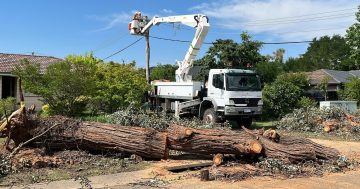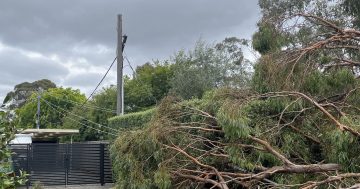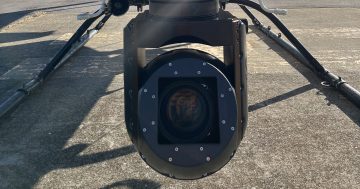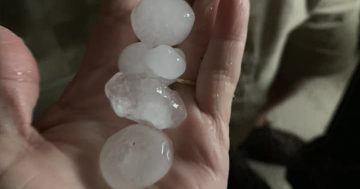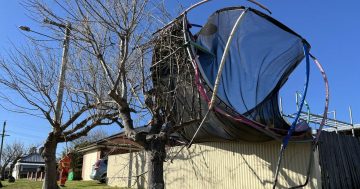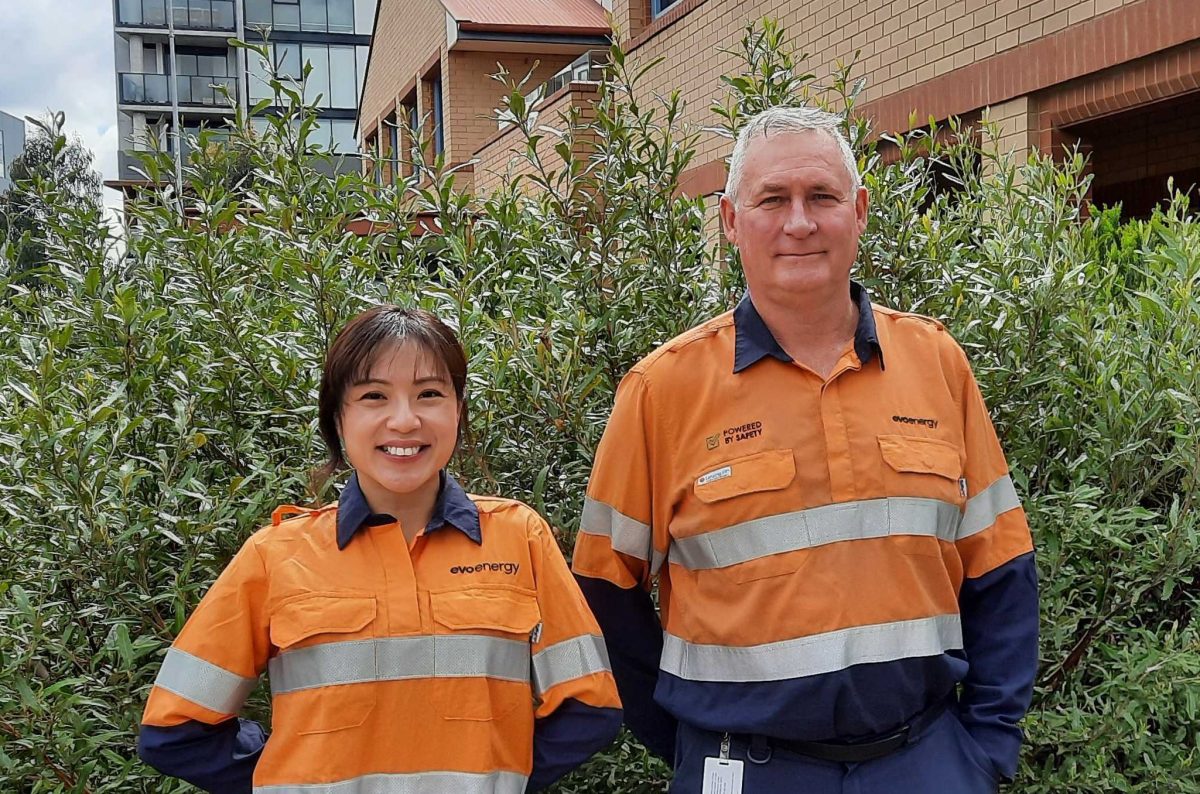
Evoenergy vegetation team member Yvonne Constable and vegetation and inspection manager Tony Ryan. Mr Ryan says there has been a lot of growth in recent years. Photo: Ian Bushnell.
It can be a jungle out there in the bush capital, and that doesn’t mix with power lines.
After recent heavy rains, seasonal growth is taking off and encroaching on Evoenergy’s network of power connections to homes across the suburbs.
This also coincides with the ACT Emergency Services Agency declaring a bushfire and storm warning for the 2024-25 summer season.
Evoenergy is urging householders to check how close their shrubs and trees are to power lines and start trimming if they are too close.
How close is too close?
Vegetation and inspection manager Tony Ryan says it’s less than a metre for service cables, less than 1.5 metres from the open mains that are in the backyard and 2 metres in rural and bushfire-prone areas.
“There’s been a lot of growth over the last three years since the previous drought has broken,” Mr Ryan said.
“We’ve had, what, 100 millimetres of rain this month already. So that stimulates growth with warm weather as well. So, it is a lot more than normal.
“But we’ve got to be prepared for that and make sure we’re educating our community that they know their responsibilities.”
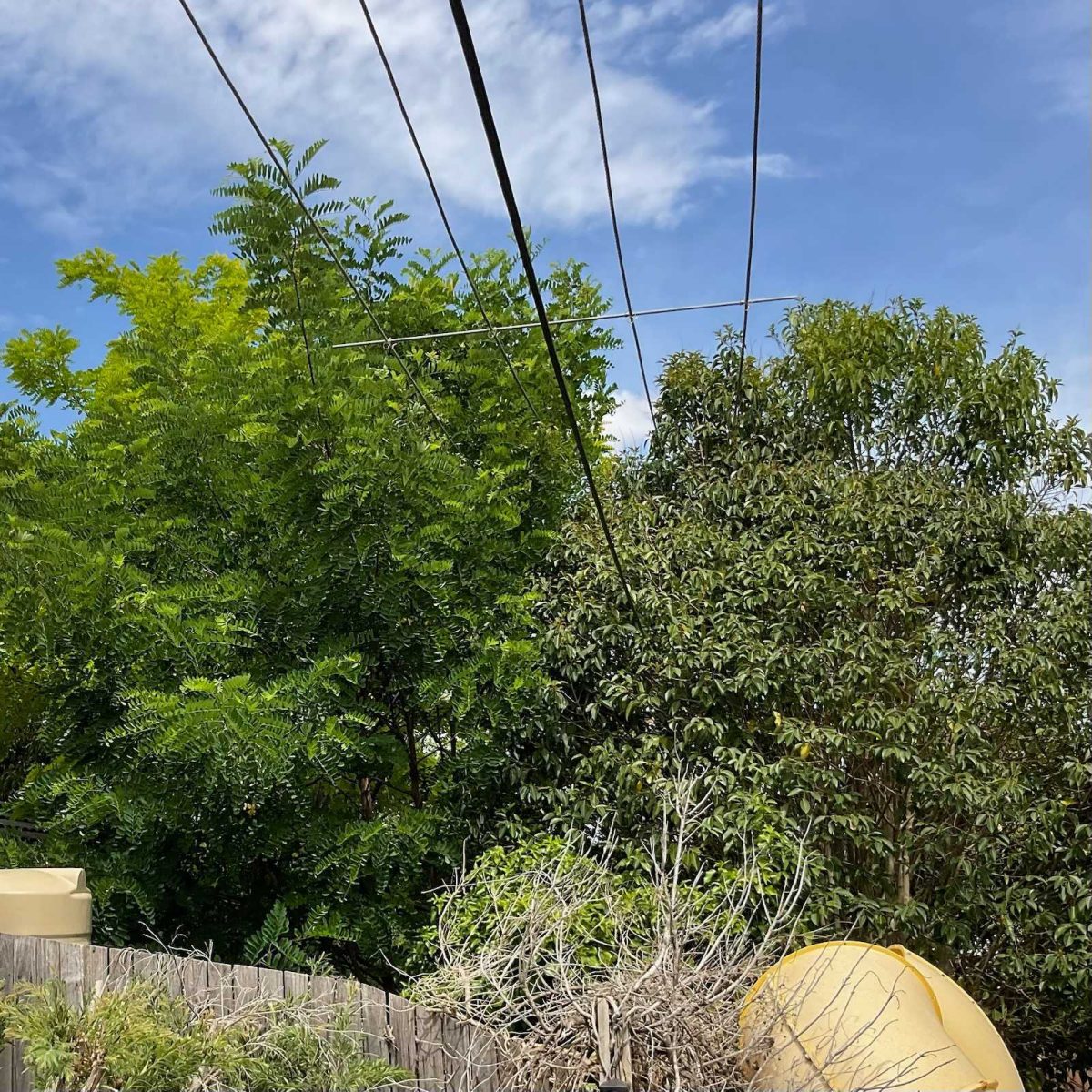
Asking for trouble. Tree branches need to be 1.5 metres clear of power lines. Photo: Evoenergy.
To avoid regular trimming, Evoenergy recommends households be proactive, allow for three years of regrowth and keep trees and vegetation more than the minimum 1.5 metres from powerlines.
Evoenergy doesn’t just leave it up to the property owner, though. It is required by law to ensure the safety of the network, conduct ground inspections across the suburbs, and perform aerial surveillance with a special camera that can measure the distance between vegetation and power lines.
Mr Ryan says Evoenergy gets around to every Canberra property with trees every three years. At present, they’re in the Belconnen area in Macquarie, Cook and Aranda.
Homeowners get two notifications to take action before Evoenergy brings in its own contractor to cut back the offending vegetation and provide safe clearances. And the cost will be billed to the homeowner.
“The responsibility is still there with the landowner, whether we give them notification or not. It is part and parcel that you do look after the vegetation, whether it be trees or shrubs in your backyards,” Mr Ryan said.
Renters need to pass on any notification to the agent or landlord.
Mr Ryan says not only does Evoenergy want to prevent power outages but also threats to property and lives through fires, live wires and electric shock, particularly if it is wet.
“The risk is you can get a shock off some tree if it gets close,” he said.
“Anything that’s touching a power line has the potential to conduct electricity. So just don’t go near it, and the message is keep your trees clear of the power lines.”

Trampolines are notorious for becoming airborne during high winds and damaging power lines. Photo: Evoenergy.
Evoenergy is also urging householders to prepare their properties for storms and high winds by not leaving loose objects in yards and securing things such as trampolines, which have been known to take flight and damage power lines.
“If you know there’s a storm coming, either tie them down or weigh them down or move them into your garage as much as you possibly can,” Mr Ryan says.
In a storm, trees or their limbs can also bring down power lines. Mr Ryan says if one touches a fence or car the advice is to stay at least 10 metres away.
In a bushfire, the distance is 25 metres. Mr Ryan says that even bushfire smoke, if heavy enough, can be a conductor of electricity.
For property owners unsure of how best to cut back vegetation and tree limbs safely, Evoenergy has a recommended list of accredited arborists experienced in working around power lines.
To learn more about how to manage your property, visit the Evoenergy website or phone 13 23 86.












